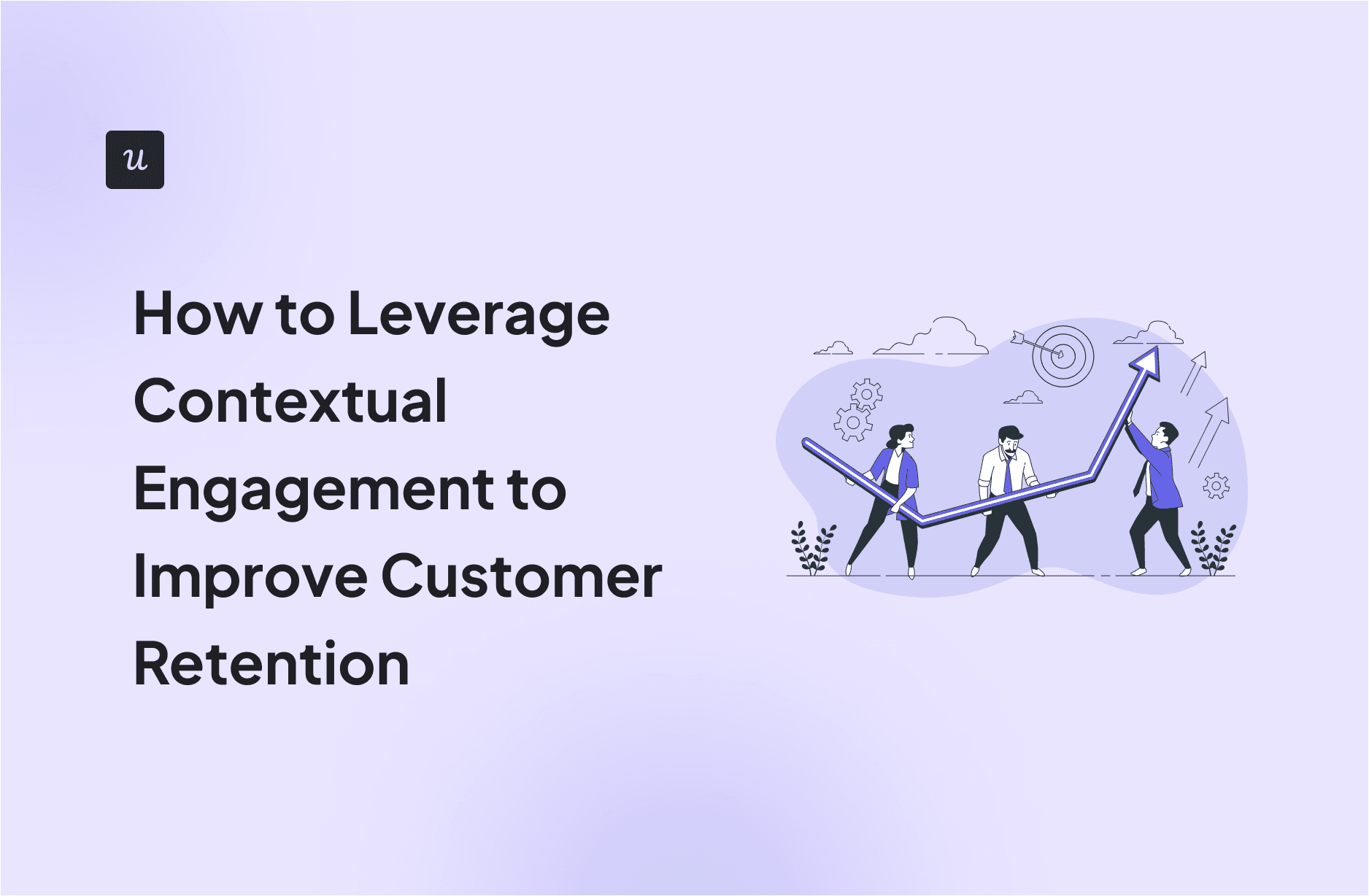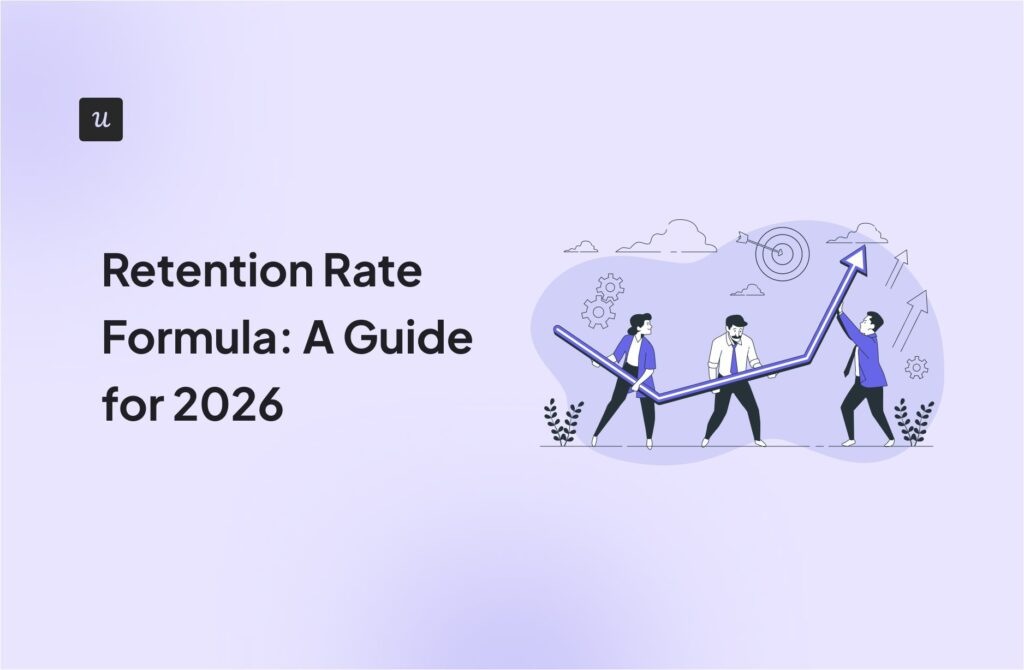
Picture this: you walk into a diner and sit down at a table. The waiter asks, ‘The usual?’ You nod, and a serving of blueberry pancakes lands in front of you—double maple syrup and almond flakes, just as you like them.
You’ve been coming to the joint for a couple of years, it’s Sunday, breakfast time. They know it’s blueberry pancake time.
If you’ve ever been in this situation, you’ve experienced contextual engagement firsthand.
How can you leverage it for better customer retention in your SaaS? We cover it in the article!
Ready to tuck in?
Try Userpilot Now
See Why 1,000+ Teams Choose Userpilot

What is contextual engagement?
Contextual engagement is a strategy that involves fostering customer interactions relevant to their specific context.
What do we mean by context?
That’s their behaviors, needs, preferences, location, time, device they’re using… You get the drift.
In retail, this could be in the form of personalized recommendations based on past purchases, in marketing, ads based on customer interests, and in Saas, personalized in-app experiences in SaaS.
Why is contextual engagement important?
Contextual user engagement drives user retention in a number of ways.
- It ensures that interactions are tailored to the user’s immediate needs and preferences. This creates a more meaningful and satisfying user experience.
- Personalized interactions are more likely to capture and hold the user’s attention. To boost engagement.
- Consistent and relevant engagement builds trust and loyalty. It makes customers feel understood and valued. This increases the likelihood they continue using the product.
How do you get started with contextual engagement?
Implementing contextual engagement strategies isn’t complicated. Here’s how to go about it, step by step.
- Get the right tools. You need software that enables you to collect customer data and use it to trigger personalized experiences.
- Collect customer-relevant data. Including, information about their demographics (age, gender), geographic data (location, language), firmographics (company size, sector), psychographics (values, lifestyle choices), needs (pain points, jobs to be done), behaviors (brand interactions, in-app behavior) and technographic data (OS, browser, device type).
- Segment customers. Use the data to create relevant customer segments. For example, segment them based on their NPS survey responses.
- Create contextual experiences. For example, in-app messages triggered in real-time to provide guidance when the user comes across friction at a particular touchpoint.
- Use feedback to improve strategies. Gather feedback at different stages in the user journey to identify opportunities to make the experiences more engaging and satisfying. Trigger the survey contextually whenever possible to ensure the experience is still fresh in users’ minds.
Contextual engagement strategies to enhance customer relationships
With the basics covered, let’s look at practical ways of embedding contextual engagements into the customer journey.
Provide a personalized approach during onboarding
What makes successful onboarding?
It’s purposeful: it enables users to discover relevant features. It leads customers to value along the most direct route. Without bothering them with stuff that they don’t need.
You can achieve this by personalizing the onboarding experiences for users with different JTBDs.
First, analyze the behaviors of the most successful users within each segment to find the happy path to activation and create flows that help new users replicate it. And use welcome surveys to profile users and trigger relevant flows.

Use the right messaging for feature adoption
Even if the initial onboarding is excellent, it doesn’t necessarily guarantee the users adopt all the features they need.
If that’s the case, you can target the users with in-app messages prompting them to engage with the relevant feature. Ideally, at the moment they most need it.
Imagine that your social media management platform users have yet to adopt the scheduling option. You could aid feature discovery with an interactive walkthrough triggered when the user starts composing a new post. And repeat it until they adopt it.

Improve customer relationship management with relevant educational materials
Some features may be too complex for customers to activate and adopt right away. This causes friction, which could ultimately lead to customer churn.
The solution?
Contextually triggered educational resources. Like video tutorials or how-to guides that help users master the functionality. And get the most out of the product, which increases the chances they remain your customers.

Create more meaningful interactions during the adoption
Contextual engagement can make the adoption phase more productive and more meaningful for your customers.
Imagine a guided path that adapts based on customer interactions.
If a user excels in certain areas but struggles in others, it can adapt to provide more resources, quizzes, and tips in the areas where they need improvement.
Or surveys triggered when the user engages with a feature for the first time to understand how easy it is to use. So you can enhance the journey for new sign-ups.
Trigger personalized recommendations regarding expansion
To maximize the product value, customers often need more advanced functionality. And you can cleverly include them in the higher plan to give them a reason to upgrade.
Contextual in-app prompts can help you drive upsells and consequently increase customer lifetime value. Just trigger them at the moment the customer may need the extra feature.
Here’s an example of a Loom modal promoting a premium feature enabling users to remove unflattering filler words from their recordings. It appears when the user finishes recording the video.

Create proactive engagement based on past behavior
Contextual engagement enables teams to act proactively to enhance customer experience and prevent customer churn.
Here’s how:
First, analyze the behaviors of the churned users for patterns. Use path analysis to identify user actions they complete before they churn.
Next, bundle them into a custom event and use it to trigger in-app experiences with guidance. To prevent them from dropping off.
Conclusion
Contextual engagement helps product teams foster more meaningful interactions between customers and the product. Relevant and purposeful, it enhances the customer experience and drives customer satisfaction.
If you’d like to see how to create contextual engagements with Userpilot, book the demo!








